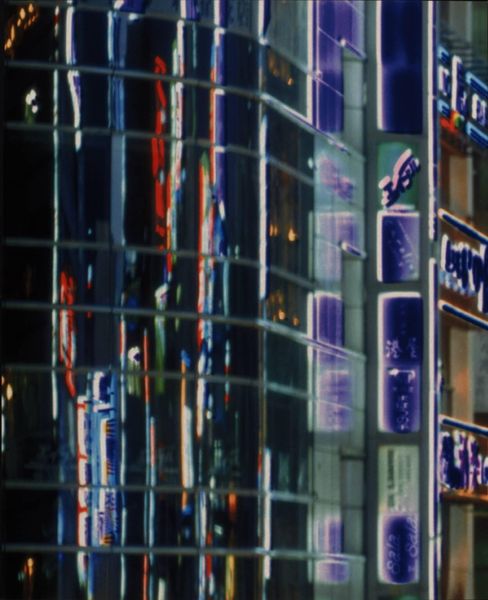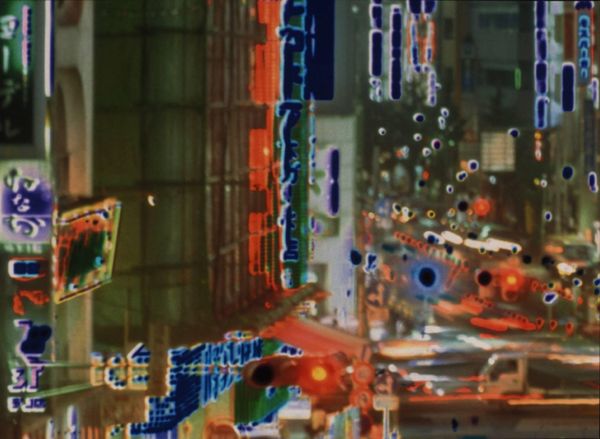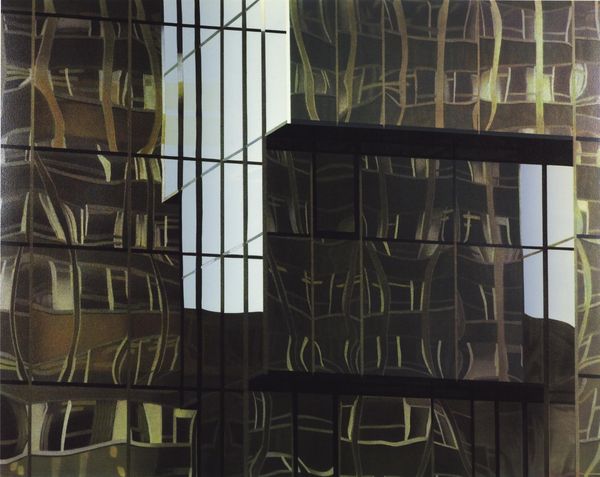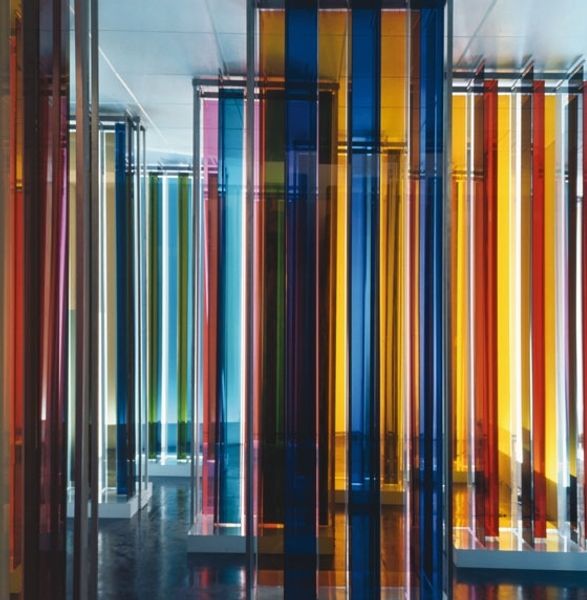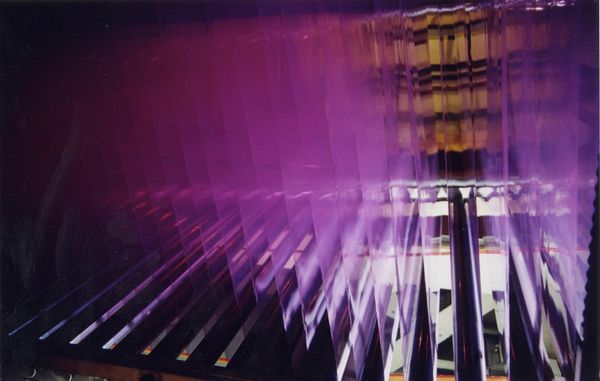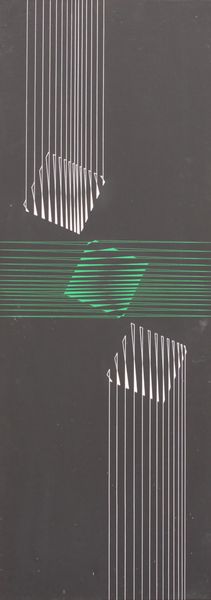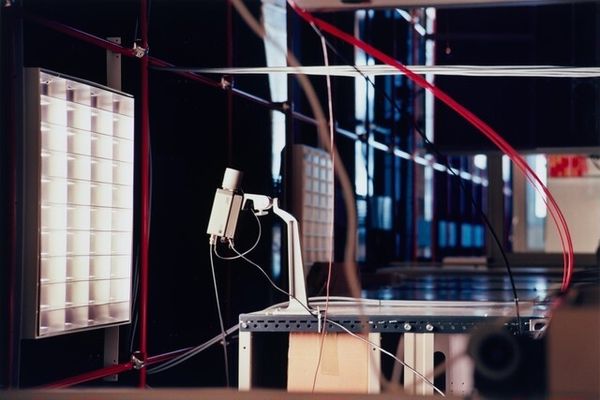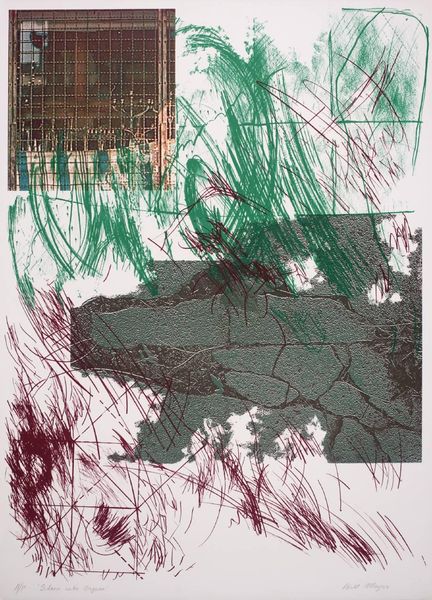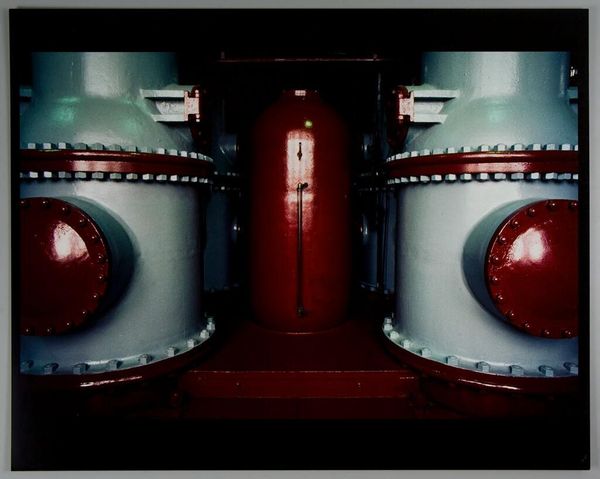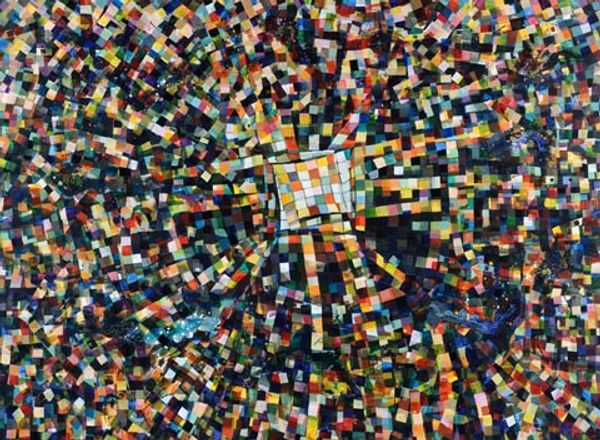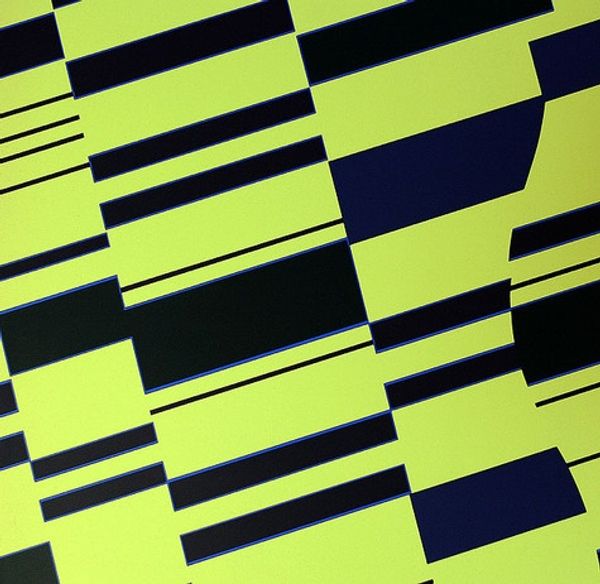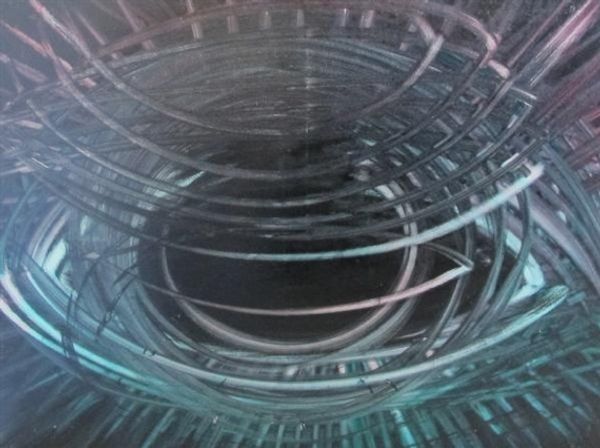
Dimensions: image: 888 x 740 mm
Copyright: © Catherine Yass | CC-BY-NC-ND 4.0 DEED, Photo: Tate
Curator: Catherine Yass's "Stage," part of the Tate Collection, offers a beguiling vision of constructed space. Editor: My first impression is a sense of destabilization. The colors and angles create a vertiginous effect, almost like peering into the architectural guts of a dream. Curator: The imagery evokes the invisible frameworks that uphold our perceptions. Scaffolding, rigging, all hinting at the support structures beneath grand performances, both theatrical and societal. Editor: Absolutely. It makes me think about the behind-the-scenes labor, the often-unseen effort that shapes our experiences. The blue almost feels like an x-ray, showing what’s usually hidden. Curator: That inverted palette invites us to question the roles of foreground and background, presence and absence. What we take for granted as solid and reliable is revealed as constructed and contingent. Editor: In the end, it’s a striking reminder that everything we see, feel, and experience is supported by a foundation that is just as vital as the finished product. Curator: Yes, Yass gives a sense of the unseen labor required to make a spectacle happen.
Comments
Join the conversation
Join millions of artists and users on Artera today and experience the ultimate creative platform.
tate 7 months ago
⋮
Stage 1997 is a rectangular portrait-orientated screenprint on white wove paper featuring a photograph of the backstage area of the theatre at the Barbican Arts Centre in London. The photograph offers a perspective looking sharply upwards into the space, and the image is characterised by what appear to be an almost abstract collection of intersecting vertical, horizontal and diagonal forms. Visible throughout the image and especially prominent on the right-hand side are a series of long columns that extend the length of the space, creating a vertiginous effect, while the upper part of the photograph depicts a grid pattern formed by stage apparatus attached to the ceiling. Located at the bottom of the image just to the right of the centre is a long rectangular metal bar that is seemingly supported by thin metal wires that form an inverted ‘v’ shape. The image, which is slightly blurred in places, is mainly composed in stark shades of green, yellow and orange alongside small patches of intense blue and a large black area on the right-hand side. The work is signed by the artist on its reverse.
